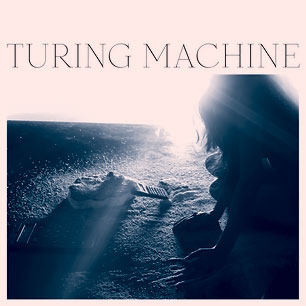Alan Turing is widely regarded as one of the most influential scientists of the past 100 years (He actually turned 100 two months ago). Among his contributions to our world is his eponymous machine, an abstract technique to help illustrate how computers carry out functions. Every computer in the world can be seen as operating with this underlying premise. Not only does New York dance-punk outfit Turing Machine owe its name to this legendary device, its music presents itself in a similar manner: parameterized blueprints, discrete but related, laying out a foundation upon which additions and adjustments can be made. This pattern becomes clearer as What is the Meaning of What unfurls in its entirety.
What is the Meaning of What is Turing Machine’s third album and their first in eight years, and the story behind it is a tragic one. In 2009, the band’s original drummer Jerry Fuchs passed away after falling down an elevator shaft. Fuchs worked with about a dozen household names, often simultaneously, and his death was mourned by the entire New York music community. In the years since, remaining members Justin Chearno and Scott de Simon have enlisted help from several DFA members, including Pat Mahoney, to help complete Fuchs’ final farewell with his original band. Mahoney’s work here is as strong as anything he did with LCD Soundsystem. Fans of the late, great James Murphy vehicle will find much to like here.
What is the Meaning of What is tailored to appeal to your hips and feet, but the music, like its title, is befittingly philosophical. There is no punctuation at its end, so there is no way of telling whether it is a statement or a question, but the music is expansive enough to accommodate such musings with ease. “Lazy Afternoon of the Jaguar” finds a seamless groove, with rich, celestial guitars and a flawlessly produced rhythm section. Electronic loops plait their way in and out, tambourine and almost-speaking robotic noises step over one another to be heard. Layers upon layers of finely-detailed effects continuously draw you in further. In the closing minute that big fat hook that is the bassline, equally rooted in dance-punk and electro (The Rapture’s “House of Jealous Lovers” comes to mind), is just icing on the cake.
“Bovina” is much more smash-and-grab, relying on the ever-changing drum patterns and a two-note guitar riff that’s poured through pretty much every effects pedal imaginable. It somehow manages to ratchet up the intensity every thirty seconds or so, culminating into an all out, stage-collapsing banger, with tinges of Primal Scream in their rock heyday. What is the Meaning of What never forgets what it is, but it often tinkers with the notion of what it’s supposed to be. As a result, it transcends many of the gripes that people have with dance music, namely monotony. Although it can approach repetitiveness, it never even comes close to approaching stagnancy; it throws in curveballs when it needs to, but never lets them interfere with its impetus. This variety is never more evident than with “If It’s Gone (It’s On)”. Motorized synthesizers stay on a collision course with the razor sharp percussion, never letting up to catch a breath. It’s uncommon for stadium-sized music that makes you want to move this badly to be this intelligent; every mini-climax is impeccably deliberate, and they all work in tandem towards something grander. Opener “Yeah C’mon” takes a similar feel-good course of action. The rigid, rapid fire instrumentation is like the musical equivalent of a snuff box. It’s bracing, and a little disorienting if you’re unfamiliar with it.
The entirety of this record carries the feeling of people in a room banging it out, doing what they love, and trying to do a fallen soldier proud. Turning Machine’s fourth and possibly final record may well go down as their best and most important. Fuchs’ legacy is something that What is the Meaning of What will likely have to carry with it, but don’t let that affect your experience, the songs are more than happy to speak for themselves. This is smart, smooth, high thread count dance-punk.

